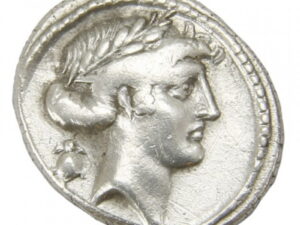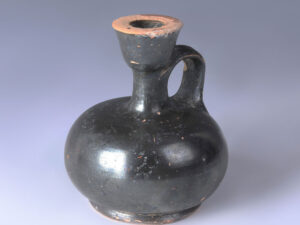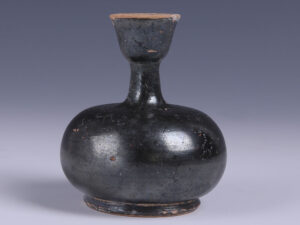Famed classical archaeologist and art historian, John Beazley, created a formal typology for Ancient Greek painted vessels, and this specific ceramic can be classified under the ‘oinochoe’ (deriving from ‘chef’ I pour) or ‘chous’ type (meaning libations). The latter can be defined as a small, squat pouring vessel always with a trefoil mouth, which would have been used to transport and distribute liquid from a larger krater. Chous have developed specific association with the Athenian wine festival, Anthesteria, which was held in honour of the God Dionysus; these vessels are thought to have been particularly favoured by children who were given chous as gifts in celebration of this monthly festival. However, this particular ceramic lacks the usual infantine imagery we see on this vessel type.
Invented c.525 BC in Athens, the red-figure technique allowed the painter to use the natural red of the terracotta medium to formalise his design before he filled these voided shapes with details so as to suggest depth and volume. The contrasting black-figure technique required the painter to enact the more tiresome task of inscribing his thick, sometimes streaky black images with an inflexible metal engraver, only to create flat, two-dimensional images.
Learn more about collecting Ancient Greek vases in our relevant blog post: Collecting Guide: Types of Ancient Greek Vase





















